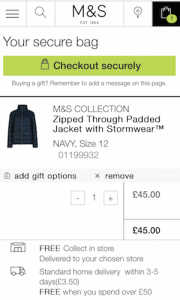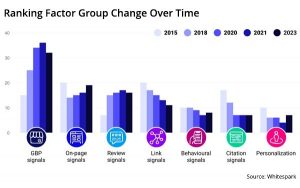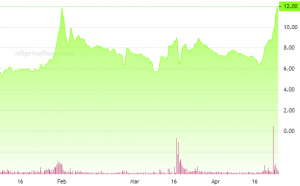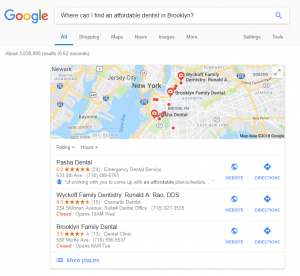— September 12, 2017

Later this week, I’m teaching a three-hour social media bootcamp, and the goal of this bootcamp is basically to explain, in some detail, the primary social media platforms that everybody should or could be on.
The first thing I want to state is that not every social media platform is right for everybody, and a lot of times, people tend to gravitate towards the one they like to use the most, which is primarily Facebook. I mean, there are more people on Facebook than anything.
But it really depends on your business, who your customers are and where they are spending their time. That’s the place that you need to be. Now, I can’t do a three-hour session in ten minutes, but I’m gonna do a quick, broad brush overview of what I consider to be the top six platforms right now, especially for small business owners or medium sized businesses. Those include:
- Google+
Let’s start with Facebook. The biggest thing about is Facebook is that it is much more of a friend platform. Who’s on there? Well, your friends, your high school friends, your neighbors, etc. Yeah, your customers can be on there, too. But one of the biggest mistakes I hear people say is, “I want to separate my personal account from my business accounts.” Yeah, you could do that, but it’s not a great idea, because here’s the bottom line: your personal account gets seen by all your friends. Your business accounts, or what I call brand accounts, are only seen by people that go to it. The reason for that is Facebook wants you to pay to get your business seen on Facebook. So, here’s what I suggest that you do for Facebook.
Number one, focus on your personal profile. Make sure that you’re spending time putting good stuff in there. If you’re putting things like quotes and fun stuff in there and not being too controversial, then occasionally, you can post things like, “Hey, I’m having this event,” or “Check out my webinar, my podcast, my blog” — whatever.
The other thing that’s really, really big on Facebook is groups. If you want to communicate with your customers, create a group around your customers and invite them in. Never add people to a group without their permission. That’s just bad juju. You don’t want to do that.
So, using Facebook is going to be mostly personal friends, but also some customers, depending on your business, especially if you’re in the consumer space. You still want to post things to your Facebook business pages or brand pages, but you may have to share those to your personal wall, so it’s hard to separate.
The other thing to think about is using groups to promote your business.
The second platform I want to talk about is LinkedIn. Now, LinkedIn is primarily a business-to-business platform, but again, it’s your personal profile that counts. You are still yourself, communicating to a whole bunch of other people. Yes, you can have a business page, but not a lot of people spend time on it. So the same advice for Facebook applies here. Post some great stuff, share some good articles. I post all my blogs, my podcasts; if I find a good article in Inc Magazine, I’ll post that there.
You can also create groups and do similar things that you would do on Facebook, but LinkedIn groups tend to be more business-to-business and it’s a little harder to get people to engage in those. But, it’s not a bad idea to try.
Again, on LinkedIn, you want to focus on your personal account. It’s the most important asset that you have. Spend time posting great stuff and interact with messages and things like that. Follow people, especially your customers. They’re not hard to find. Find people that are going to be beneficial to your business-to-business life.
The next one is Twitter. Now, Twitter is different, because on Twitter, you can post all you want, all day long and nobody really cares. You could post the same thing ten times. You can also have multiple accounts inside of Twitter. So for example, I’ve got one specifically for Brian Basilico. Then I’ve got another one for my books called Not About You, so I share information about my books on that one, and then anything else like my blogs and my podcasts are all posted to Twitter that way.
You can get direct messages on Twitter, and you need to interact with people on a one-to-one level. Really, the bottom line is that a lot of people just post things and don’t spend a lot of time on Twitter. If you’re going to be on Twitter, I suggest checking it at least once a day to see if anybody sent you any direct messages, if you have notifications, and what people are sharing. Again, you’re looking at this as a personal business, but also you can have your brand pages or your brand accounts, and you can have as many of those as you want. The more you add, the harder it is to control, so obviously focus on what’s most important to you.
The next one I want to talk about is Pinterest. Number one, Pinterest is primarily based on visual. Number two, a lot of it is crafts and food and things like that, but there are still great opportunities for you to post your stuff. On Pinterest, you can have a personal account and you can have a business account. I spend the vast majority of my time working on my business account. That is where I post pictures from my blogs and my podcasts, with the intention of drawing people back to the website so I can get some listens and some views and things of that nature.
What you want to do is make sure that you’re exporting the images from those blogs and podcasts to Pinterest, to your business account, by creating a pin board specifically for each one. So I have one for blogs, I have one for the Bacon Podcast, I have one for Bacon, and I have a handful of other ones. So, that’s a visual platform that you really should focus just on your business side.
Will it get you some traffic? Absolutely. Maybe not a lot, but it’s at least worth posting your information to.
Google+
The next one is Google Plus. Now, a lot of people don’t think Google Plus is a valid social media network, but if you’re a content creator, it absolutely is.
When you post things to your business profile, it’s business.google.com, and it’s linked to your Google Plus page, which is linked to that business. That content gets indexed by Google, giving your content the ability to be found in searches better.
So Google+ is a place that you’ll want to play around with, especially if you’re a content creator. Make sure that you’re doing it on a regular, consistent basis, and use things like Google Analytics to measure it.
The final social media platform I’d like to discuss is Instagram. Now, Instagram is owned by Facebook, and the two of them can integrate together. Instagram is also primarily a visual platform. It’s all about pictures. You can also post videos. You can combine a bunch of videos sequentially into stories. If you’re a visual communicator, it’s a great way to do it.
The other thing about Instagram is that it’s primarily based on a cell phone as opposed to a desktop, whereas all of the other platforms I talked about are primarily desktop but can be done on a cell phone. I find desktop on all of those a little easier, but on Instagram, you can’t do a lot on your desktop, so you have to use your cell phone.
Another thing that you can do on Instagram as well is you can have multiple accounts. You can have up to six accounts associated with your Instagram app, but each one has its own separate log in. But once you’re logged in, you can switch between them. So for example, when I do my Bacon Podcast, I put pictures up there.
The one thing about Instagram that you can’t do is you can’t add links, so what you need to do is use hashtags to get people to find your stuff. The only place you can put a link in Instagram is inside your profile.
Final Thoughts
Think about how you can start using these platforms for your business. Where are your customers? Are they engaged? Can you provide them useful content there? Is that content leading them back to your website? Each platform has its pluses and minuses. It also has its own set of challenges to create, build, and maintain relationships (which is what social media is all about).
I would love to hear your thoughts and comments on this subject. Comment below and share your thoughts and ideas on how you use currently use social media and how you can implement some other platforms to grow your sphere of influence! Do you have any ideas or advice you could share?
Digital & Social Articles on Business 2 Community
(36)




